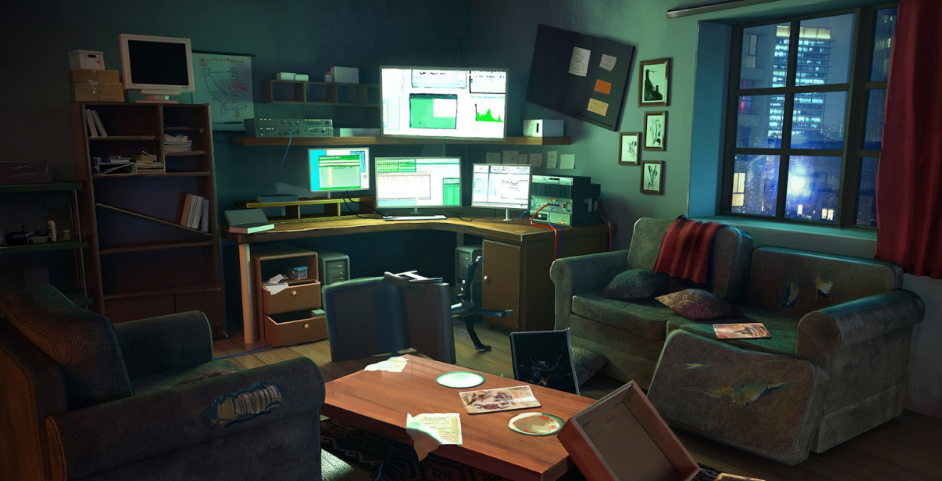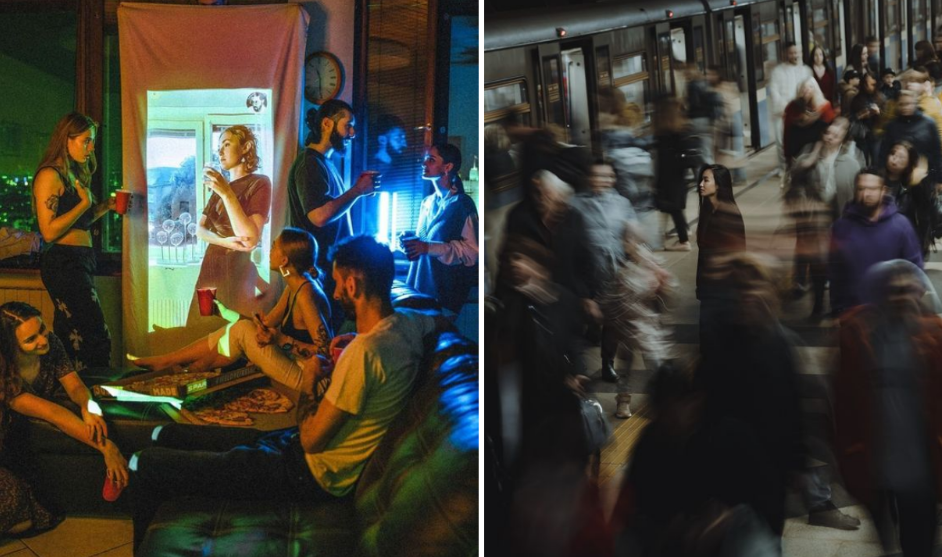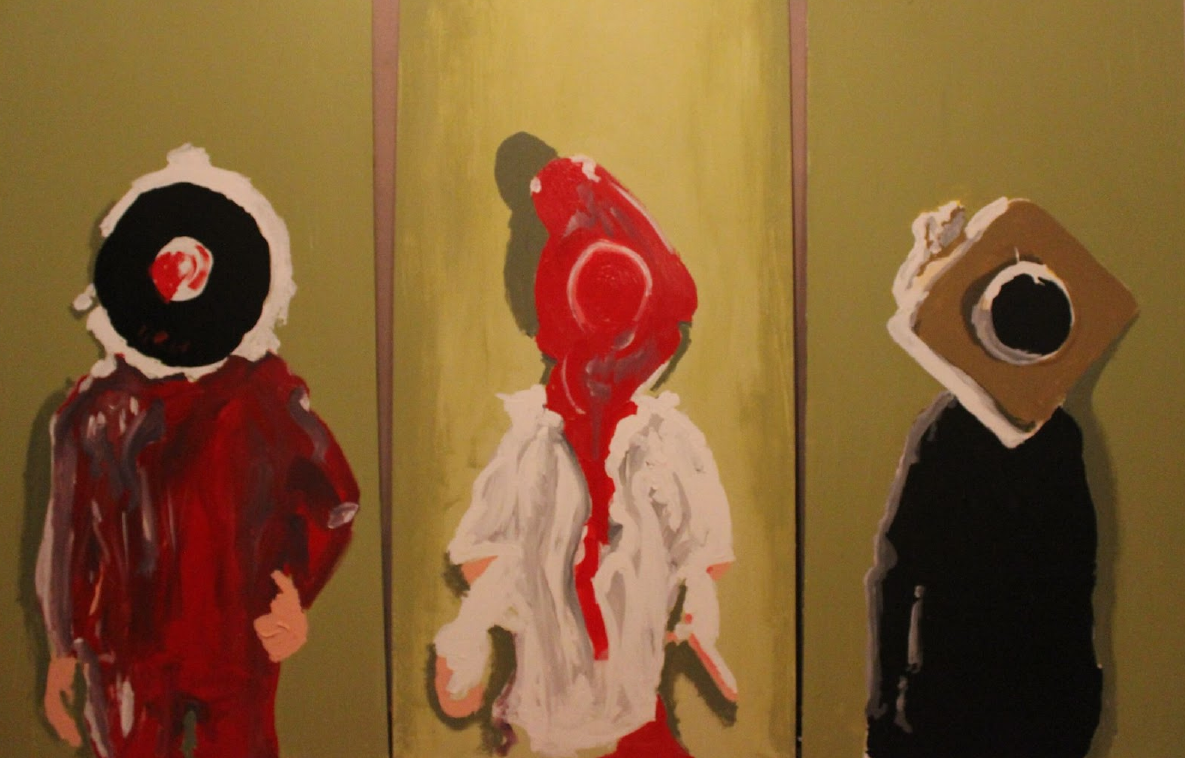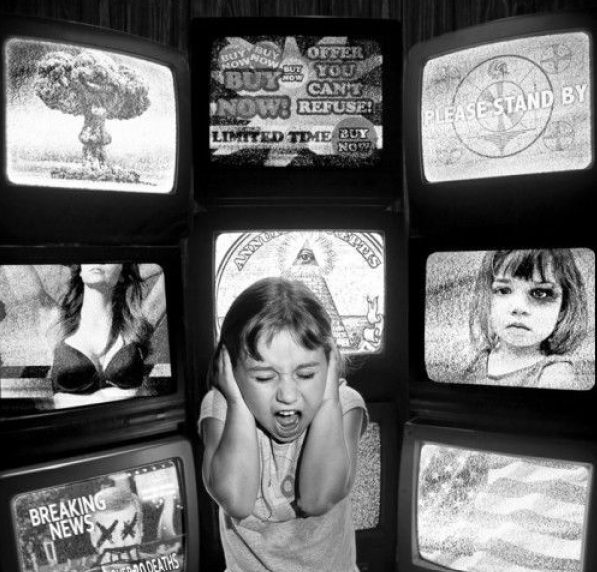 Illustration 1: The studio apartment of Aadhithya. Source: artwork by Surendra Pratapsingh Rajwat (pinterest)
Illustration 1: The studio apartment of Aadhithya. Source: artwork by Surendra Pratapsingh Rajwat (pinterest)
Aadhithya 1, a young man in his twenties, works as a business reporter for a news organization. After a demanding week, he finds himself relaxing on his living room couch, with the television broadcasting news flashes in the background. As he dozes off, he is abruptly awakened by the heated exchange of baseless arguments between two politicians on the screen. Seeking a break, he strolls towards the kitchen in his compact studio apartment, casually spreading butter on his toast. Turning his attention to the television placed at the farthest corner of the room, he notices the stock market information “FY1-FY2”. In that moment, he pauses, takes a deep breath, and says to himself, “I’ve been here before!” It’s almost as if he is recalling a future memory.
You may already be thinking, “Oh, that’s just déjà vu,” but consider this:
What if I told you it’s not merely déjà vu, but a techno-déjà vu crafted by technology itself? Aadhithya isn’t alone in this; it could have happened to you as well. So, what if the distinction between the real and the unreal begins to fade?
A Sneak-peek into Déjà vu
Expressions such as “Oh, I’ve been here before,” or “I knew this all along,” or “it feels like I’ve met you before” are typically the cues that lead an individual to recognize the phenomenon of déjà vu, positioning them in the liminality of the real and the unreal. It immerses individuals in a mixture of familiarity and confusion. This eerie sense of recognition has led both scholars and the general populace to link déjà vu with memory, specifically a memory of an event that is yet to happen. While the association is understandable, given this connection finds its roots in two intriguing facets: firstly, the feeling of déjà vu intertwines the past with the present, creating a subtlety of familiarity. Secondly, its occurrence, devoid of any predetermined conditions, unfolds as a deeply personal, almost whimsical experience. Notably, there are scarce documented instances of two people experiencing déjà vu in precisely the same manner. Although what seems to be prone to contestation is the very aspect of “ memory”.
 From left to right: (2) an ongoing party, where the lady feels like she already knew this had to come. (3) A women in a substation encountering an experience of déjà vu. Source: Pinterest
From left to right: (2) an ongoing party, where the lady feels like she already knew this had to come. (3) A women in a substation encountering an experience of déjà vu. Source: Pinterest
The question is, how far can a memory be personal? Especially in the times of large scale mobilization of information all over the world transcending through different bodies via screens. Our existence unfolds in a realm saturated with a myriad of images, videos, scripts, and audio, some pertinent, others inconsequential to our individual narratives. In such a landscape, it becomes pertinent to ponder: do we inhabit a sphere where the concept of “personal memory” still holds weight? Our reality isn’t merely social; it’s profoundly mediated, fostering a cultural memory that extends beyond the confines of subjective recollections. As we have substantially argued why memories could not be subjective, we dismantle the belief of déjà vu’s association with memory. It is Peter Krapp who unfolds a whole new perspective and emphasizes on forgetting more than recollecting. Though mnemotechnics in this computerized world would advocate that nothing really gets lost and that everything is stored, Krapp is skeptical about this and expresses “whether such a superarchive would assist in remembering” because, it is simpler to forget something when one has a lot of information at their disposal since it is easy to become
lost in its sheer volume. Let us attempt to understand the redefining of déjà vu’s link from memory to the event of forgetting.
Krapp does not see memory and forgetting as oppositions, rather takes a unique angle to the whole story by presenting the concept of past, present and future against the chronological understanding of the themes with the help of Benjamin’s idea of dialectical images. You need not worry, it is simply the looping of time and past events which does not have a linear occurrence as conceived rather it interferes into each other through images (in our case visuals in screens that we see). Thus déjà vu becomes “ an experience of the present inextricably linked to the past, but which has a stake in the future”, this dialectical understanding gives way for further cultural investigation. Since human memory is not a superarchive, it will decide to forget certain fragments of information. These forgotten bits of information have a familiarity attached to it that cannot recur once forgotten. Now, imagine a desire coupled with a particular information is forgotten and the desire rises to the surface coupled with other sets of information, what would this form? A familiar, irrecurrible, unrepeated, repetition of a feeling at the present moment, which already had a stake in the future. Such can be the formation of déjà vu, but how can it be techno- déjà vu you might wonder!
The Age of Simulacra

Illustration 4: Facsimiles of simulacra/ Baudrillard’s ghosts. Source: https://grumpusart.wordpress.com/2015/03/22/new-painting-facsimiles-of-the-simulacra-or-baudrillards-ghosts/
Remember how a memory cannot be subjective? Let us ponder upon that. On an average day the consumption of data comes from various sources, predominantly from the Internet. What seems like a simple leisurely walk becomes a less-than-relaxing affair. Everywhere you turn,
billboards assault you with advertisements, and whether you’re listening to the radio or scrolling through social media, you’re bombarded with details on everything under the sun. You might find yourself knowing more about your next-door neighbor through Instagram than through a face-to-face conversation – from their appearance and profession to the details of their pet dog. What we are consuming is
reality produced over and over to the culmination of hyperreality “this is what Baudrillard means by ‘the precession of simulacra’: the representation of the real comes before the real, so that it becomes the real”. Simulations are not of the real objects or the subject it is intended to, rather it is produced for the sake of itself. Baudrillard goes on to modify Marshall McLuhan’s “medium is the message” to “medium is the model”, that is continuously modeling us on what to think. Communication is highly becoming isolated from the meaning/ intention it is to produce; it is as though communication produces communication. This does not mean that reality has ceased to exist, rather simulation has hijacked reality. Information is becoming more and more obscene without its relevance. In a world steadily retreating into isolation, the overflow of information has morphed into a sprawling dumpyard of data. Take Aadhithya, as mentioned earlier; he, nearly disconnected from the social fabric, thrives within a media-saturated realm, deciphering vast amounts of information. It’s essential to note that Aadhithya isn’t an exception – you, too, are part of this interconnected system, at this point the déjà vu he experienced can steadily be our personal déjà vu too.
Illustration 5: Bombarded with simulations, reality produced over and over creating hyperreality. Source: Pinterest
Techno-Déjà vu
We live in a world where our friends are beyond our physical proximities, they are connected through the internet. This digital connection introduces us to a diverse array of individuals, traditionally unknown yet intimately familiar through the narratives they share. From ideologies to favorite stars, TV shows, and even glimpses into their family life, we’re intertwined with intricate details without the need for a physically intimate setting. Our memories, once tied to physical places, now draw inspiration from the visuals presented in the latest YouTube video. When we visit these locations, it’s not uncommon to replicate the experiences shared by influencers, inadvertently contributing to the perpetuation of a singular narrative in the vast realm of digital data. Over time, these threads interweave to such an extent
that the boundary between the real and the unreal becomes increasingly blurred. In this narrative landscape, it’s not just the events that come into focus, but also the desires that shape our collective experience.
Let us now recreate a déjà vu for Aadthiya (you could take it as yours if you are convinced enough):
Aadhithya decides to break free from his routine, opting for a day off, with a cafe just a mere 100 meters away from his workplace calling out to him. This haven, known to him through a friend’s Instagram story, holds the echoes of shared moments enjoyed by a couple. Longing for social interaction, Aadhithya embarks on the short journey, immersed in the perpetual scroll of Instagram. Upon reaching the cafe, he deliberately selects the very table where the couple once shared their joy. As he signals the waiter and peruses the menu, he gazes toward the opposite table. At this moment, he pauses, takes a deep breath, and says to himself, “I’ve been here before!”
Introspecting into this déjà vu, if we could ask a few questions to ourselves we would more or less realize, what is curating a techno- déjà vu. How did he know about the cafe? How did he choose the table? What desire motivated him to go to that particular cafe? More precise would be the question of who/what created the desire? If not for the constant influx of information, networked simulations echoing through screens, would this event even unfold? It beckons us to ponder whether technology is, indeed, the master curator of our déjà vu experiences.
1. Aadhithya is a fictional character used for the assignment.
Bibliography
(2017, November 9). YouTube: Home. Retrieved January 28, 2024, from https://medium.com/@iammarzzz/nostalgia-and-deja-vu-994dd70d6829
Murphie, A., & Potts, J. (2003). Baudrillard and the Technologies of Simulacra. In Culture and Technology. PALGRAVE MACMILLAN.
SHAH, N. (2022). THE INSIDIOUSNESS OF INFORMATION OVERLOAD. In OVERLOAD, CREEP, EXCESS AN INTERNET FROM INDIA. Institute of Network Cultures.
Vardoulakis, D. (2004). Peter Krapp, Déjà vu: Aberrations of Cultural Memory. Minneapolis: University of Minnesota Press, 2004.




Recent Comments